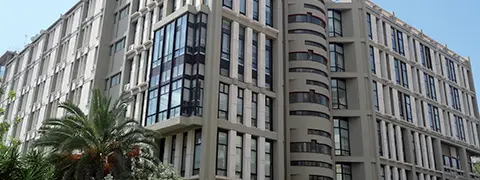Author
Michela Bassanelli
Researcher in Interior Architecture at Milan Polytechnic
The office isn’t dead: it has evolved. Post-pandemic workspaces are becoming relational hubs designed to foster innovation, well-being, and collaboration.
With hybrid work increasingly widespread, designing flexible, multifunctional, and inclusive environments is the new challenge. From coworking spaces to on-site childcare, the future of work is shaped by architecture.
We can safely say that the widely predicted “death of the office” referred to in so many articles about the future of workplaces during the pandemic has not actually come about. On the contrary, although smaller in size in some cases and with a different kind of interior layout, the office building – this article mainly refers to the services sector/society – is still one of the main places where work can be carried out by means of sharing ideas, skills and relationships, fostering the kind of informal interaction and cooperation that are fundamental for innovation, professional growth and well-being. Nevertheless, the pandemic has sanctioned the end of an organisational model based on well-defined spatial boundaries and a synchronic notion of time.
These two conditions also have direct repercussions on the design of workspaces, which, faced with the imperative of "work is where you are", have had to come to terms with the impact resulting from the application of agile working, now most notably present in the form of hybrid work, and also with emerging needs of both male and female workers.

The Axel Springer Campus in Berlin was designed by OMA.
Agile working: key figures of a growing trend
The latest data provided by Milan Polytechnic’s Smart Working Observatory in October 2024 describe a rather stable scenario across Italy compared to the previous year, with an increase in large businesses that now employ about 2 million workers (+1.6% compared to 2023), a decrease in the number of small and medium-sized businesses from 570,000 staff to 520,000 in 2023, and stability when it comes to micro-enterprises and the Public Administration. The average number of remote working days currently stands at nine per month for Italian employees. The Observatory also noted that this way of working is increasingly in demand among both male and female workers, showing that if it were to be eliminated, 27% would change jobs and 46% would try to change their employer's mind.
It is also worth remembering that agile work is “a particular way of carrying out subordinate work introduced to increase competitiveness and facilitate a better work-life balance” (definition of Smart Working by the Italian Ministry of Labour and Social Policies) aimed at bridging the gender gap. Nevertheless, according to Eurostat Italy is still one of the European countries that makes least use of this type of work, 43.5%, unlike the Netherlands, Ireland, Finland and Germany that boast figures of around 70%. Work will be increasingly hybrid in the future: while technology reinforces a sense of belonging to a community even at a distance, physical presence and both intellectual and bodily interaction are still crucial factors.

The Sella Open Innovation Center is located in Turin (Italy).
New office models: international case studies
The new workspace is designed like a network of places constructed around a central hub (company headquarters) and the home or a ‘third space’, such as coworking or local offices, where people go on agile work days2.
This new geography implies the need to rethink the office building as a relational hub, not just in a spatial sense but also in relation to staff well-being. A number of well-known international cases reveal common views on the centrality of shared spaces where people can enjoy those moments of interaction that were so badly missed during the periods of enforced closure brought about by the pandemic. The Axel Springer Campus project designed by the OMA firm (2013-2020, Berlin) is built around a large open space, a triangular atrium overlooked by ten staggered, terraced floors with different types of stations depending on the type of work being carried out: offices, coworking rooms, meeting rooms, relaxation areas. The ground floor also accommodates restaurants and spaces for hosting events and exhibitions in continuity with the outdoor urban space.
This kind of terraced design is also found in Carlo Ratti's project for Sella Open Innovation Centre (2025, Turin), whose design is defined around what the architect calls a ‘square’, just like those found in our urban spaces. A series of furbished terraces overlook a central void that houses a coffee bar designed to be an interface with the local ecosystem, an agora for holding events and workshops. Internally, there are different types of workspaces: hot-desks, i.e. single unassigned workstations that can be booked via an app, phone booths for making calls, project rooms, i.e. modular rooms with furniture on castors and write-able perimeter walls, and, lastly, the Sellalab coworking space with desks for start-ups, including outside businesses.
This spatial design was previously experimented with at the end of the 1960s by the Dutch architect Herman Hertzberger for the Centraal Beheer offices (Apeldoorn 1968-72). He placed relational aspects at the focus of the project by emptying the corners of individual cubes to create meeting points. From a furniture viewpoint, flexibility and mobility seems to be the focus of attention. Large companies like Vitra (Club Office 2021; Comma 2022), Herman Miller (Clubhouse 2021) and Ikea are promoting furniture systems on castors that are contemporary renditions of the club-style design promoted by the office planner Francis Duffy (1997) so many years ago.
The office continues to be a congregation place even in the case of hybrid work: flexibility, multi-functionality and well-being boost innovation and community

The Sella Open Innovation Center is located in Turin (Italy).
Workplace well-being: company nurseries and gyms
Another of the latest trends is to consider the introduction of activities related to the care and wellbeing of workers by means of spaces related to parenting, adding new pavilions housing crèches. It is worth mentioning Cariparma's CARIbimbi crèche designed by ZPZ Partners (2011), which combines sustainability-related factors with pedagogical innovation, and the Adidas Kita building designed by Agps architecture (Herzogenaurach, 2011-2014), which houses a crèche and staff gym. Incorporating this type of activity in a business headquarters not only generates value for staff, it also sets up virtuous interaction with the local area, making the company an active player in local welfare.
The office continues to be a congregation place even in the case of hybrid work: flexibility, multi-functionality and well-being still boost innovation and community, with benefits for people, businesses, communities and culture.
1Bassanelli, M., Forino, I. (2022). “Lavoro immateriale e pandemia. Dalla worksphere all’Ho-Wo in-between” (Immaterial work and the pandemic. From the worksphere to the Ho-Wo in-between). Territorio (Territory), no. 97, pages 17-26.
2Bassanelli M., Ingrao A., Satta C., Spazi per il lavoro a distanza e per la cura. Evoluzione Storico-Giuridica, Prospettive Sociologiche E Architettoniche (Spaces for remote working and care. Historical and legal developments, sociological and architectural perspectives, Giappichelli, Turin, 2024.













